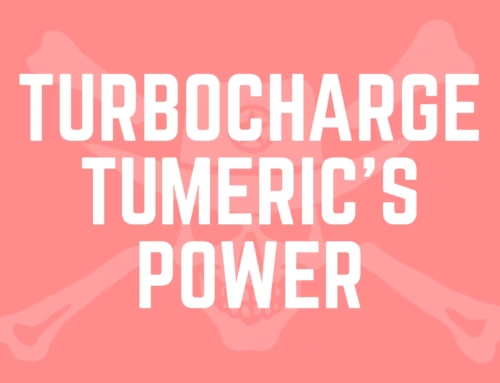Your Anti‐Inflammatory Food Guide for Peak Health
What Are Anti-Inflammatory Foods?
Inflammation is your body’s natural response to stress or injury—but when it stays switched on, it can slow you down, stiffen your joints, and sap your energy. Anti-inflammatory foods are nature’s countermeasure, delivering nutrients that help your immune system dial back that persistent “on” switch.
- Antioxidants: Polyphenols and flavonoids neutralize free radicals before they spark inflammation.
- Healthy Fats: Omega-3 and monounsaturated fats balance out pro-inflammatory omega-6s.
- Fiber: Feeds the good bacteria in your gut, strengthening the barrier that keeps inflammation from spilling into your bloodstream.
- Phytonutrients: Plant compounds that modulate gene expression and calm inflammatory pathways.
Why They Matter
Research shows that swapping just a few inflammatory ingredients for anti-inflammatory alternatives can measurably reduce markers like C-reactive protein (CRP) and interleukin-6 (IL-6). That translates into less joint pain, more stable energy, and a lower lifetime risk of chronic diseases like heart disease and diabetes.
- Reduce CRP by 20–40%: Clinical studies link antioxidant-rich diets to significantly lower inflammatory markers.
- Strengthen Your Gut: A high-fiber diet reinforces tight junctions in your intestines, preventing “leaky gut.”
- Sustain Energy All Day: Low-glycemic vegetables and whole grains avoid sugar spikes that trigger inflammation.
- Long-Term Protection: Epidemiological data show up to a 50% lower risk of heart disease with anti-inflammatory eating patterns.
Top Anti-Inflammatory Staples
These foundational foods deliver the nutrients your body needs every day. Think of them as your core toolkit for battling inflammation at the cellular level.
- Leafy Greens: Spinach, kale, and Swiss chard are loaded with vitamins A, C, K, and flavonoids.
Do: Eat ≥2 cups daily. Avoid: Bottled dressings with seed oils and added sugar. - Berries: Blueberries, strawberries, and raspberries pack anthocyanins that reduce oxidative stress.
Do: Enjoy 1 cup fresh or frozen. Avoid: Sweetened dried or canned versions. - Fatty Fish: Salmon, sardines, and mackerel deliver EPA/DHA—two omega-3s proven to calm inflammation.
Do: Aim for 2–3 servings per week. Avoid: Farmed fish high in omega-6 feed. - Nuts & Seeds: Walnuts, chia, and flaxseeds provide fiber, magnesium, and ALA omega-3s.
Do: Eat a small handful daily. Avoid: Salted or sugary nut mixes. - Healthy Oils: Extra virgin olive oil and avocado oil resist oxidation and deliver anti-inflammatory fats.
Do: Use for dressings and low-heat cooking. Avoid: Industrial seed oils (soy, corn, sunflower). - Spices & Herbs: Turmeric, ginger, garlic, and cinnamon each block key inflammatory enzymes.
Do: Add a pinch of turmeric + black pepper daily. Avoid: Pre-mixed spice blends with fillers.
Build Your Outlaw Plate
Putting it all together is simple: fill your plate with balance and color, giving your body the tools it needs to fight inflammation all day.
- ½ Plate Veggies: Non-starchy choices like leafy greens and crucifers.
- ¼ Plate Protein: Fatty fish, lean meat, poultry, or plant-based tofu.
- ¼ Plate Complex Carbs: Whole grains, starchy vegetables, or legumes.
- Finish with: 1–2 Tbsp healthy oil, a sprinkle of nuts/seeds, and your favorite anti-inflammatory spice.
Tip: On active days, nudge the carb portion up; on rest days, hold steady or reduce slightly.
Quick Win
Swap your usual granola bar for Greek yogurt topped with fresh berries and a sprinkle of chia seeds. You’ll instantly boost your antioxidant, fiber, and omega-3 intake without extra sugar or processed oils.
Related Deep Dives
- The Anti-Inflammatory Diet: What to Eat and Why
- How Daily Movement Reduces Chronic Inflammation
- Supplements for Inflammation Support
FAQ
- Can I drink coffee?
Yes—black coffee contains antioxidants. Avoid sugar and high-fat creamers that negate benefits. - Are whole grains OK?
Definitely—choices like oats, quinoa, and brown rice provide fiber and micronutrients. - When will I notice effects?
Many people report steadier energy and less bloating within 1–2 weeks of consistent changes. - What if I have food sensitivities?
Introduce foods one at a time, noting any discomfort. Consider gluten-free grains or dairy alternatives if needed.
Conclusion
Switching to a diet centered on these anti-inflammatory foods will transform how you feel on and off the trail. By fueling your body with what it truly needs, you’ll banish fatigue, protect your joints, and unlock the energy for every Jolly Outlaw adventure.
Disclaimer: This article is for educational purposes only and does not constitute medical advice. Always consult a qualified healthcare professional before making changes to your diet, exercise, supplement regimen, or lifestyle—especially if you have pre-existing conditions or are taking medication.





